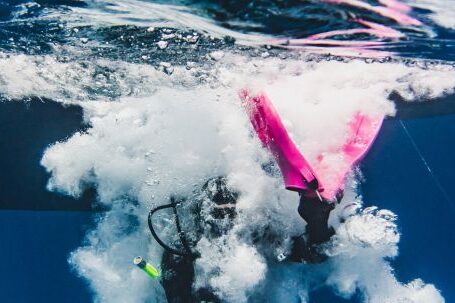Diving in low visibility conditions can be a challenging and sometimes intimidating experience. Whether you’re exploring a murky lake or diving in a dark cave, poor visibility can make navigation difficult and increase the risk of accidents. However, with the right preparation and techniques, diving in low visibility conditions can also be a rewarding and exciting adventure. In this article, we will share some tips to help you make the most of your dive in low visibility conditions.
Choose the Right Equipment
When diving in low visibility conditions, having the right equipment is crucial. A good quality dive light is essential for illuminating your path and allowing you to see your surroundings. Make sure to choose a light that is bright enough to penetrate the darkness and has a wide beam to cover a larger area. Additionally, consider using a light with a red filter, as red light is less likely to scatter and can improve visibility.
Maintain Proper Buoyancy Control
Maintaining proper buoyancy control is essential when diving in low visibility conditions. Poor buoyancy control can stir up silt or disturb the water, further reducing visibility. Practice buoyancy control techniques before your dive, and make sure to use your fins to maneuver gently and avoid kicking up debris. By maintaining neutral buoyancy, you can minimize the impact on visibility and enjoy a clearer view of your surroundings.
Use a Reel or Line
Navigating in low visibility conditions can be challenging, as it is easy to become disoriented and lose your way. To prevent this, using a reel or line can be extremely helpful. By deploying a line connected to a fixed point, you can create a reference point to follow and guide you back to safety. Make sure to practice using a reel or line in advance to become comfortable with the technique.
Employ a Buddy System
Diving in low visibility conditions can be more hazardous than diving in clear waters. Therefore, it is crucial to always dive with a buddy. Having a buddy by your side can provide an extra set of eyes and ears, increasing safety and reducing the risk of accidents. Make sure to communicate with your buddy regularly, establish a set of signals, and stay in close proximity to each other throughout the dive.
Master Your Navigation Skills
Navigating in low visibility conditions requires excellent navigation skills. Before diving in low visibility conditions, make sure to familiarize yourself with the area and any potential navigation hazards. Use a compass, underwater landmarks, and natural formations to aid in your navigation. Practice your navigation skills in clear waters first, and gradually increase the difficulty as you become more confident.
Stay Calm and Trust Your Training
Lastly, when diving in low visibility conditions, it is crucial to stay calm and trust your training. Panic can lead to poor decision-making and increase the risk of accidents. Remember to take slow, deep breaths, and rely on your training to guide you through any challenging situations. By staying calm and composed, you can make rational decisions and enjoy your dive to the fullest.
In conclusion, diving in low visibility conditions can be an exciting and rewarding experience if approached with the right mindset and preparation. By choosing the right equipment, maintaining proper buoyancy control, using a reel or line, employing a buddy system, mastering your navigation skills, and staying calm and trusting your training, you can make the most of your dive in low visibility conditions. Remember, safety should always be your top priority, so if the conditions are too challenging or you feel uncomfortable, it’s okay to postpone the dive for another day. Happy diving!




